Metroid Prime

| a game by | Nintendo |
| Platform: | GameCube |
| Editor Rating: | 9.5/10, based on 2 reviews, 4 reviews are shown |
| User Rating: | 7.0/10 - 23 votes |
| Rate this game: | |
| See also: | Action Adventure Games, Action Games, First Person Shooter Games, Retro Games, Speedrun Games, Metroid Games, Metroid Prime Series |
Metroid Prime is a first-person adventure game and the fifth game in the overall Metroid franchise. Originally released in 2002 on the Nintendo Gamecube, this sci-fi shooter pushed the series to new heights, receiving excessive critical acclaim upon its release. Starring Samus Aran, a tough female bounty hunter who dominates the far reaches of space, this intriguing title is packed with both action and wonder. As the first 3D entry in the franchise, Metroid Prime takes some risks, but sticks to the series formula. By holding true to its roots while also introducing some stellar new concepts, Metroid Prime goes down in time as one of the best first-person games on any Nintendo console.
Main Game Features
- Rich sci-fi world and lore
- Combination of first-person exploration and shooting
- Interesting upgrades and game progression
Story
Metroid Prime starts with Samus Aran hurdling through space aboard her ship, headed towards an unidentified distress signal near the planet Tallon IV. Upon arrival, Samus discovers a seemingly derelict space pirate ship and boards it to check things out. She quickly discovers that the entire crew has been killed by genetically-modified creatures that have escaped their experimental holding. During a scuffle with the queen of the parasites, Samus' armor becomes damaged, forcing her to flee to the nearby planet. On Tallon IV, she begins to discover signs of an extinct alien race and begins to look for clues behind their fate. Stuck on Tallon IV with a damaged suit, Samus must recover her missing gear and solve the mystery behind the lost inhabitants of the planet.
Gameplay
Although Metroid Prime plays from a first-person perspective, the structure of the game is faithful to other games in the franchise. Similar to titles like Castlevania: Symphony of the Night, there's a big emphasis on finding new upgrades to access new areas, allowing you to progress through the story. You start the game with a limited arsenal and suit, after the initial tutorial segment aboard the space pirate ship. Using your built-in blaster gun, you must explore the beautiful alien world of Tallon IV, fighting off any predators or enemies you come across. As you defeat bosses and solve puzzles, you'll earn upgrades to Samus' suit or new weapon abilities, which in turn let you reach previously inaccessible areas. Most of the upgrades focus on Samus' movement abilities, unlocking the ability to morph into a ball, stick to walls, and survive in harsh conditions.
Apart from the first-person perspective, the newest element introduced into Metroid Prime is Samus' visor, which can be used to scan the environment. By holding a specific button when looking at areas of interest, Samus can discover new info about the targeted subject. This allows you to learn the functionality of alien equipment, discover the strengths and weaknesses of enemies, and much more. The visor has several upgrades as well, including thermal and x-ray filters. The scanning visor is incredibly helpful during exploration, ensuring you never get too confused or lost.
Conclusion
At first, Metroid Prime takes some getting used to. While there's plenty of fun shooting action, the big focus of the game is on exploring Tallon IV and surviving its harsh environment while continuously becoming stronger and stronger. This requires some precision, especially when it comes to platforming, so things can be somewhat frustrating early on.
That said, Metroid Prime sets a new bar for first-person games in general, encouraging other titles to be more expansive, upgrade-focused, and rich with story. It's incredibly memorable, tons of fun, and packed with cool ideas and great level design. If you're itching for an unforgettable sci-fi experience, give Metroid Prime a shot.
Pros:
- Satisfying and smart puzzles
- Exploration feels rewarding
- Great atmosphere and world-building
Cons:
- Combat can feel unpolished
- Lots of backtracking
- The plot lacks motivation at times
Download Metroid Prime

System requirements:
- PC compatible
- Operating systems: Windows 10/Windows 8/Windows 7/2000/Vista/WinXP
Game Reviews
When I first heard about Metroid Prime, I was suspicious. It was a revival of the venerable Metroid series on the new Nintendo Gamecube, played from a first person perspective. Now at the time, most die-hard Metroid fans were less than happy with that announcement. We've all played FPS titles, and while they can be good, they aren't exactly original, what with some-odd dozens having been pumped out since the days of Doom and Marathon. As one of the more important aspects of the game, that's where I'll start.
The first and most important thing you must remember about this game is that it is not a first person shooter. It's Metroid, updated for the Gamecube, played in a first person perspective. All things alike, the difference is subtle, but there nonetheless.
Next, you'll want to pay attention to the graphics. They are colorful, attractive, and in all ways respectful to the previous games. I cannot count the graphics that really capture my eye, but they were audacious and simple, obvious and subdued.
An element missing from most first person titles is the sheer level of complexity that is exhibited in Metroid Prime's environments. They are filled with lush detail and always appear unique and intriguing, rather than simple elements repeated many times. Beyond that though, are the little details like the display screens with data readouts, or the reflection of Samus eyes off of the visor during a particularly bright explosion. My favorite detail of all is how the fingers in the gun arm can be viewed with the X-Ray Visor, and can be seen to change position based on what beam you've chosen.
In addition to the old school technology like the Ice Beam or the Morph Ball, Samus now has the use of Visors, allowing her to scan enemies for special weaknesses, switch to x-ray mode to track invisible opponents, or even use the thermal visor to target weak points in an enemy. Each weapon gets its own 'combo' attack now, so in addition to the Super Missile (now the normal Power beam combo), Samus can throw fire, shoot lightning, or freeze a multitude of opponents.
The storyline is perhaps the most interesting part of the game, detailing not only small parts of Samus history, but also telling the story of the Space Pirates and their terrible experiments on the planet Tallon IV. Unfortunately, it's only told through a series of text logs that can be downloaded with the scan visor. There's a lot of them, and they certainly reinforce the 'Metroid' feel, but I wonder if it would've been better to include some voice acting, and more plot.
The only real complaint I've had so far is the lack of any control customizing, as the game requires you to use the default control style. Still, that's the most substantial complaint, and given that I was able to get around the controls (awkward at first, easy to use once learned), I don't think it's much of a flaw.
Metroid Prime should give you at least twenty of hours of gameplay your first time through, and that's not counting all of the extra stuff you can collect, from items to log entries, right down to a copy of the original Metroid, if you've got a GBA and a copy of Metroid Fusion.
Altogether, this is my new favorite game, and I'm going back to beat it again, on Hard Mode (another unlockable) to secure extra art gallery extras. Definitely worth the purchase, and it's almost a candidate for The Game You Cannot Pass Up.
The good news: Metroid has taken to 3D like a Norfair Squeept to lava. (Geek-speak translation: "3D works here.") The bad news: You're really gonna want to play it about three pages from now, and the November release date is suddenly feeling like a lifetime away. "People expressed quite a bit of concern when they learned that Metroid was going first-person," says Shigeru Miyamoto, who's overseeing the game's development at Texas-based Retro Studios, "but the conclusion we came to was that in exploring this very realistic-looking world in outer space, the best perspective is really going to be a first-person one." We were skeptical at first. But after several hours spent repeatedly tearing into a 10-minute demo on the E3 show floor, ice beaming space pirates and whacking the Parasite Queen boss with charged blasts and missiles, we had Metroid Prime's hooks caught deep in our gullets.
Metroid Test Drive
According to Miyamoto, the Prime level we played is the initial stage of the game, but it accounts for less than 10 percent of the finished product. Metroid maniacs will find the opening story familiar: Samus lands on a demolished space station to investigate a distress call and ends up having to flee once the self-destruct sequence is triggered. This demo showcased several of Prime's enemies--a few straggling space pirates, some defensive gun turrets and a mess of slimy spacebugs. And although we lament the lack of a free-look while Samus is in motion (a near-essential part of most first-person games), the camera and controls are otherwise very thoughtfully orchestrated.
Worried about Metroid losing its classic feel in three dimensions? Samus can do anything she could do in 2D and then some. She comes standard with the Metroid basics--running, jumping, and shooting, ball-morph and bomb-dispensing abilities. Bomb-jumping, for instance, returns as a handy gameplay tool for when Samus needs to blast herself into out-of-the-way nooks. She also wields her trusty grappling hook and four main weapon types (the E3 demo, however, only gave us a look at the charge and ice beams). Plus, the game just looks great. "We thought that taking the effort and spending the time and money to do this graphically would really be a good upgrade for the Metroid franchise and bring it to the forefront again," says Miyamoto.
But Metroid isn't just about slick looks and alien-snuffing action. "The prime focus has been and will continue to be on the exploration aspect as we go into the fine-tuning," Miyamoto promises. Retro has given Samus' spacesuit a set of at least four unique viewing visors (shown at right) to emphasize the exploration aspect. If you've played Super Metroid, you'll remember the X-ray scope that let you see weak points in walls and secret passages. In addition to an updated version of this X-ray add-on and a combat visor that projects all the gal's stats on a heads-up display, Samus picks up a thermal scope and a scanning visor. The thermal wasn't in the game yet at E3, but we used the scanning visor in almost every room of the demo. "One of the biggest elements in this game is to scan objects to obtain information, Miyamoto says. "You can obtain information about your enemies as well, by scanning as you play the game."
Looking up every creature's name and vital stats is as simple as running a quick scan on the life-form itself. Data pods stationed throughout each level also give information on enemies. We even found one that had an analysis of Ridley, one of the main bosses from the original Metroid.
How's She Handle?
With so much to keep track of in the Metroid world, getting a quick bead on all the important stuff is essential. Fortunately, team Miya-Retro has built in a targeting system that'll lock Samus on to nearby items of interest at the touch of the L button. You can use it to focus on enemies, switches and scan points, launch your grappling hook, or center your view and strafe side-to-side. It's the hottest button on the controller for Prime.
Thanks to its intuitive controls and first-person adventure gameplay, Metroid is shaping up much better than hardcore fans expected. But for those gamers who still aren't sold on 3D, Nintendo will release the 2D-side-scrolling Metroid Fusion on the Game Boy Advance alongside Prime this November. For more on this Super Metroid-inspired adventure and a possible link-up with Metroid Prime, flip the page.
The last time we checked in on Metroid Prime, our concerns with the fan-favorite series going 3D were put to rest by the impressive level that we saw. That was then, this is now, and we've explored an additional four levels that have left us crying for more. In case you're unfamiliar with this legendary series, here's a short highlight reel of landmark Metroid moments:
Metroid (Nintendo Entertainment System), 1986
The groundbreaking original game found our heroine, Samus, navigating the labyrinthine tunnels of the planet Zebes while fighting Kraid, Ridley and Mother Brain, who was trying to use the power of the metroids for her own nefarious purposes.
Metroid II (Game Boy), 1991
Samus heads to planet SR388 with the sole intention of destroying the Queen Metroid. A single metroid, however, escapes.
Super Metroid (Super NES), 1994
Back to Zebes Samus goes to confront not only the reanimated Kraid, Ridley and Mother Brain, but a whole host of new enemies and Space Pirates, too. All this while attempting to retrieve the stolen metroid hatchling from Metroid II.
Super Smash Bros. (Nintendo 64), 1999 &
Super Smash Bros. Melee (GameCube), 2001
Samus comes out of a long hibernation to kick Nintendo-character ass in the now-classic (and highly successful) fighting-game series.
Fast-forward to the present:
Metroid Prime (and to no small extent, Metroid Fusion) is poised to not only rejuvenate, but also reinvent the series that has, for so long, gone missing. Reborn as a first-person adventure, Prime bucks both the preconceptions of what a Metroid game and first-person shooter should be. Focusing less on twitchblasting (although there's plenty of that) and more on exploration, Metroid Prime puts you in the suit and brings you face-to-face with Samus' world in ways that 2D never could.
Although one might be inclined to view Samus' arsenal as her most important equipment, it's her visor that plays the biggest role. Through careful use of her combat, scanning, x-ray and thermal visors, Samus can gather all the info she needs to navigate any set of circumstances, whether it be in combat (by spotting an enemy's weak point) or in piecing together the clues to an environmental puzzle.
Visually, the game is rendered with a staggering attention to detail. Once you land on the Chozo area (which has been comandeered by the Space Pirates), a plethora of visual fireworks bombard you all at once. Cool details like condensation, reflections, splatter, static and short-circuit effects flood her HUD at one point or another. And when Samus fires a charged-shot, the air around the projectile warps. Enemies, it must be noted, are not only deceptively fast, but are also extremely well-animated, with rag-doll physics coming to life when fallen Space Pirates tumble from their perch.
While Nintendo is to thank for many of the innovative touches that have gone into the game, developer Retro gets the credit for pulling it all together so beautifully. As one Nintendo rep told us: "The folks at Retro are fans of the original games. The intent is not to make a first-person shooter, but to bring Samus into a 3D world. To call it just a first-person shooter undermines the game.
Snapshots and Media
GameCube Screenshots
Metroid Games
See Also
Deprived of many of her powerful weapons from Metroid Prime, Samus this time finds power in the divided nature of the very planet, Aether itself.
When the crew from the USS Voyager (the latest Star Trek incarnation and the only one still producing new episodes) defends itself from an attack by a hostile probe.









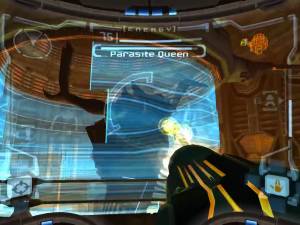

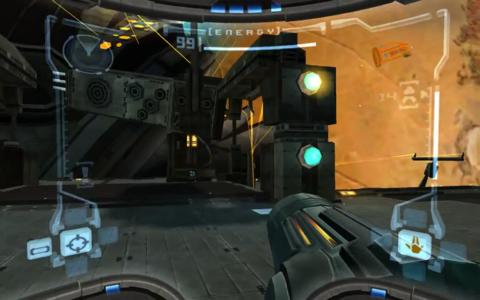

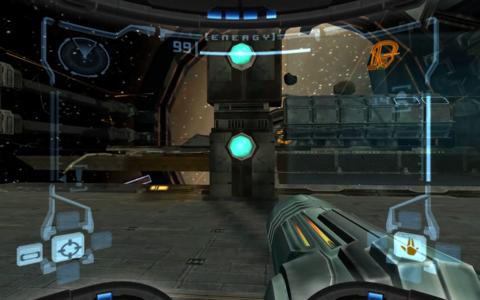











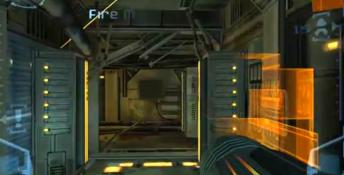



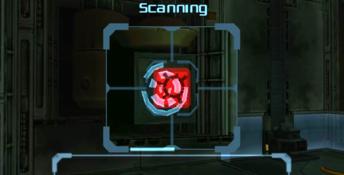


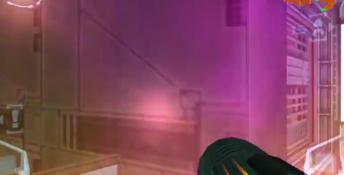
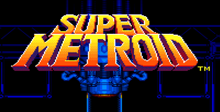 Super Metroid
Super Metroid
 Metroid
Metroid
 Metroid Fusion
Metroid Fusion
 Metroid: Zero Mission
Metroid: Zero Mission
